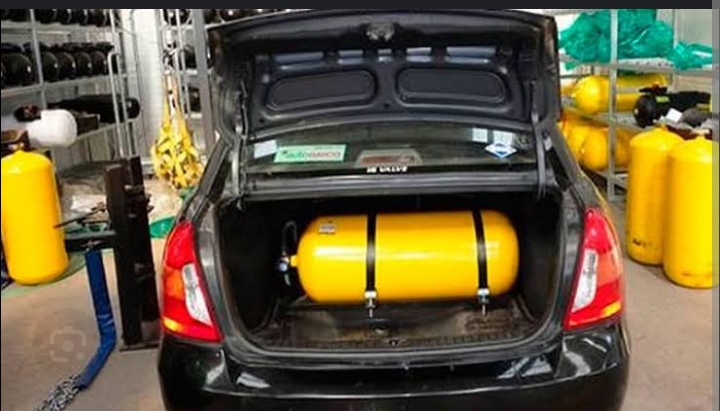Featured
CNG-Powered Vehicles’s Safety Measures To Follow To Avoid Explosion

The CNG-powered vehicle runs on compressed natural gas (CNG) as its fuel source instead of gasoline or diesel.
CNG is primarily composed of methane and is considered a cleaner-burning alternative, producing fewer emissions compared to fossil fuels.
These vehicles can be either designed specifically for CNG or modified to run on it.
Below Are Key Features of CNG-Powered Vehicles
Fuel Efficiency: CNG vehicles typically offer good fuel efficiency and lower operating costs due to the lower price of natural gas compared to gasoline.
Environmental Benefits: CNG produces lower levels of harmful emissions, such as carbon monoxide and particulate matter, making it more environmentally friendly.
Tanks and Storage: CNG is stored in high-pressure tanks, which must be made of strong materials to withstand the pressure and designed according to safety standards.
Engine Modifications: Some vehicles may require modifications to their engines to run on CNG, though many manufacturers produce dedicated CNG models.
Check-out Types of CNG-Powered Vehicles Below
Passenger Cars: Many manufacturers produce CNG versions of standard cars
Buses: Public transit agencies often use CNG buses for lower emissions.
Trucks: CNG is increasingly used in commercial vehicles for freight transport.
Follow these guidelines to avoid explosions and enhance safety with CNG vehicles,:
1. Regular Maintenance: Undergo regular checkups and maintenance sessions with authorized specialists to ensure that CNG system is operating properly.
2. Leak Checks: Regularly search for leaks of the fuel system components, such as tanks, valves, and hoses, with the help of visual inspections. If any part is le aking, a soapy water solution test should be done to see its location clearly, blowing up bubbles.
3. Tank Integrity: Making sure that the CNG tank looks fine and costs nothing thus, because it doesn’t have any dents, corrosion, or damage. Tanks must be run for tests when required by the law.
4. Proper Filling: Abide by the filling specs to ensure the tank is not overfilled and pressure is kept within the safe range when filling the tank.
5. Emergency Preparedness: Be prepared by knowing emergency procedures for a gas leak or fire. The fire extinguisher should have extinguishing efficiency when used on flammable gas fires and also be green in color.
6. Ventilation: Remember, the most important thing to consider here is if CNG tanks are safely stored, filled in well-ventilated places. This means no dangerous gases release from them.
7. Secure Components: All parts, including valves and connections, should be adequately clamped down to prevent any potential leaks.
8. Driver Training: Safety training for drivers and maintenance personnel should cover a variety of materials, including identifying the dangers and following the correct methods to handle these dangerous gases.
9. Regulatory Compliance: Adhere to all the local as well as national regulations concerning the operating and maintenance of CNG vehicles.
Note that following the above mentioned safety measures is the only technique that can lead you to the level of safety where you do not have nearly any risk of explosion.







